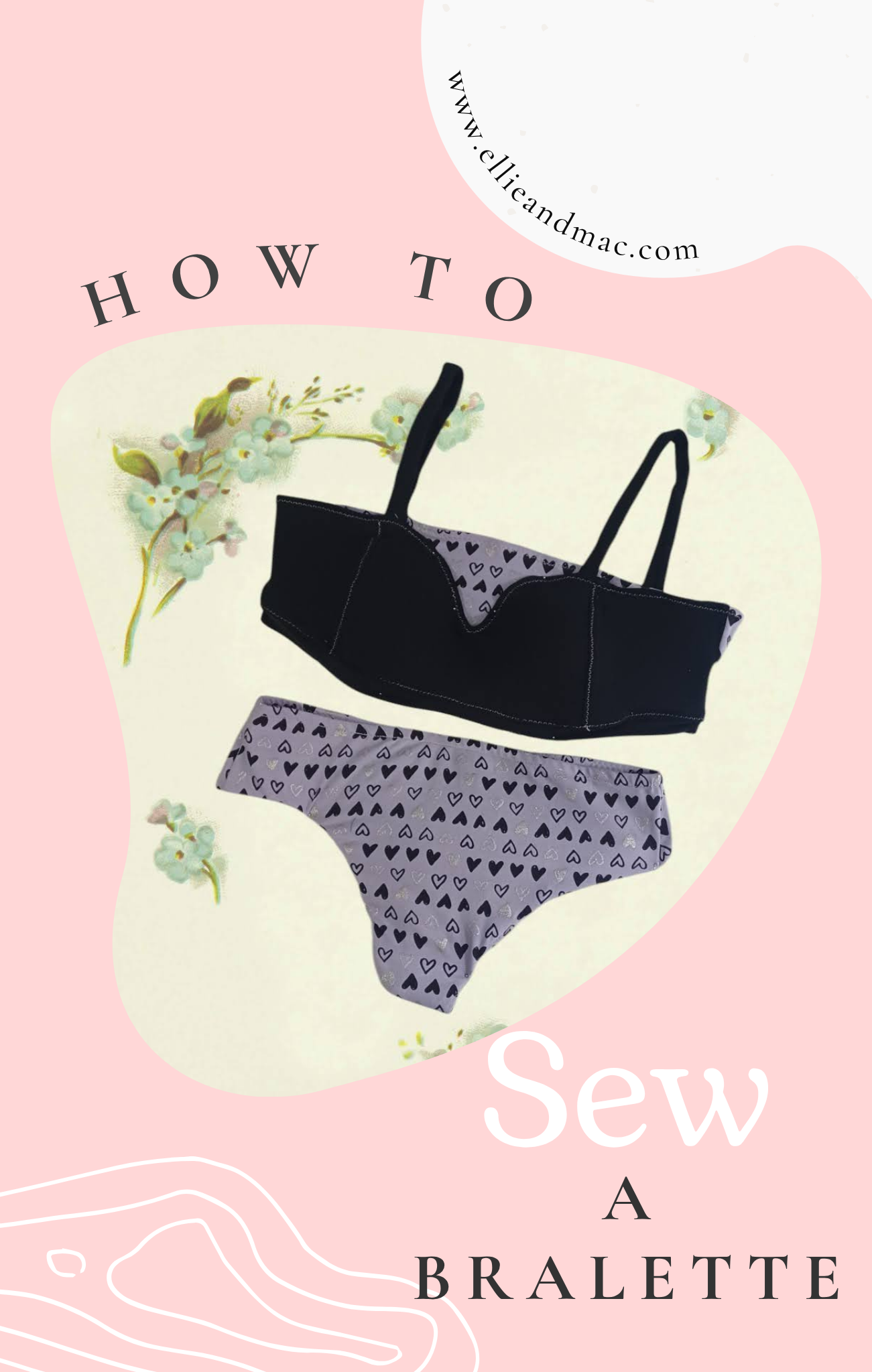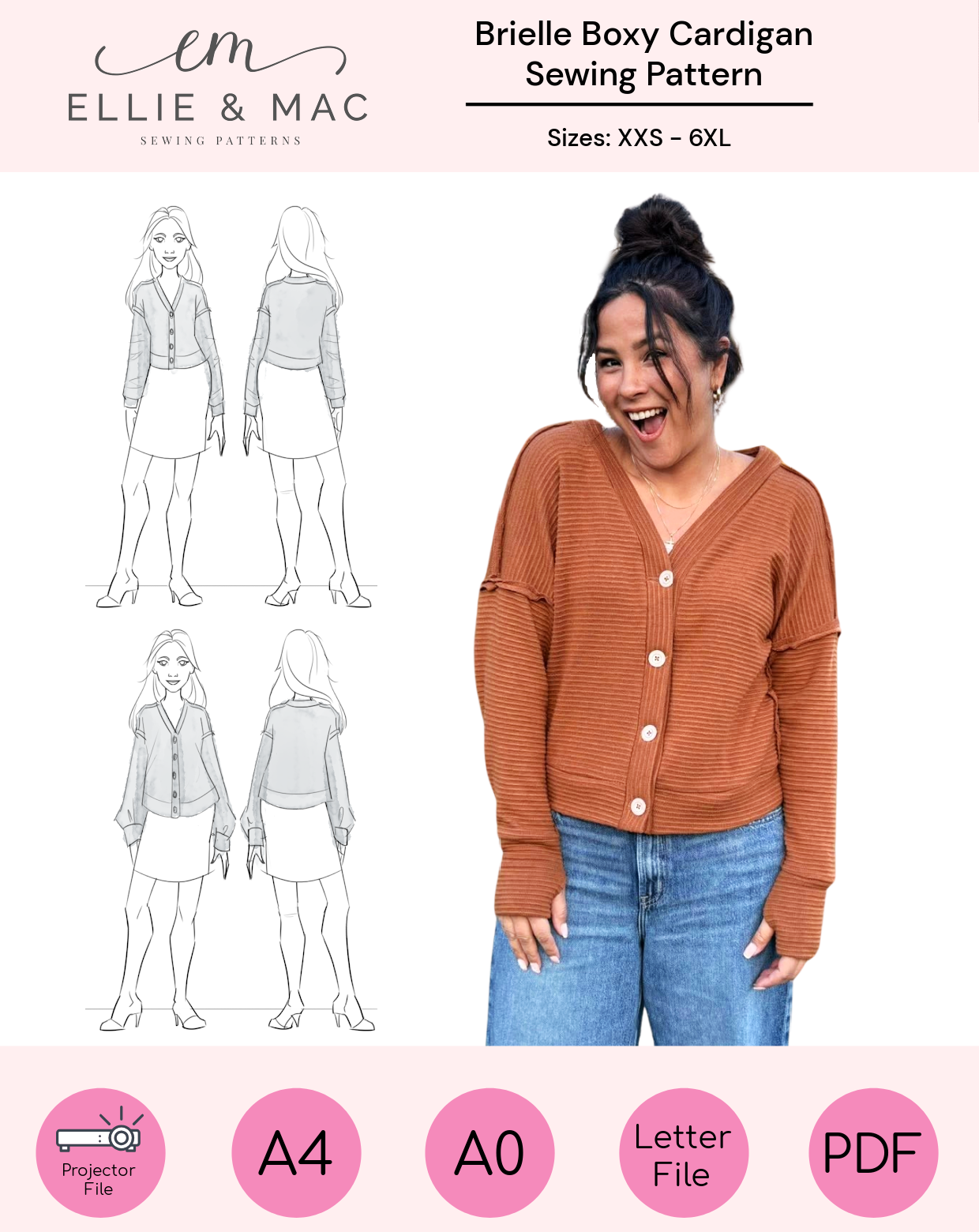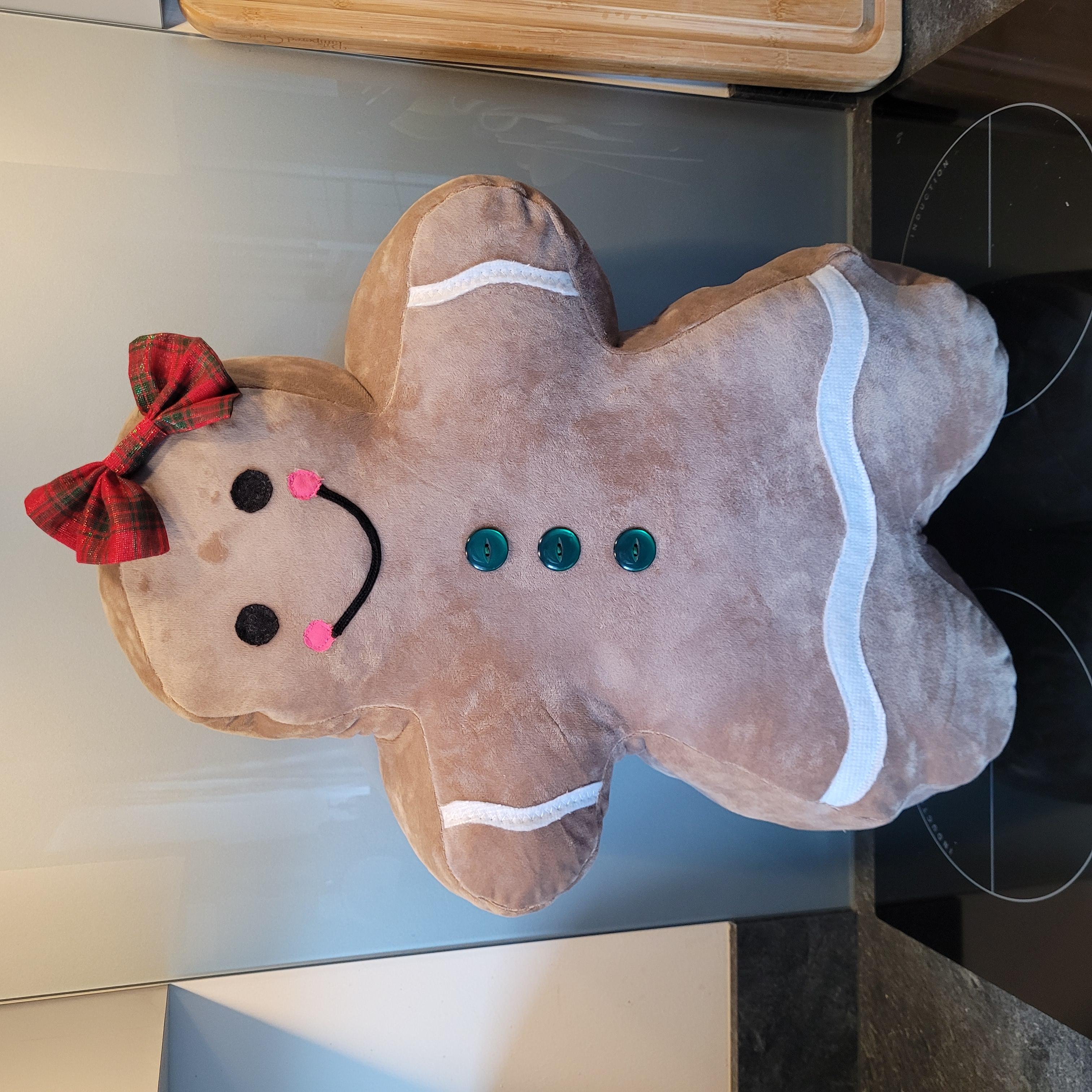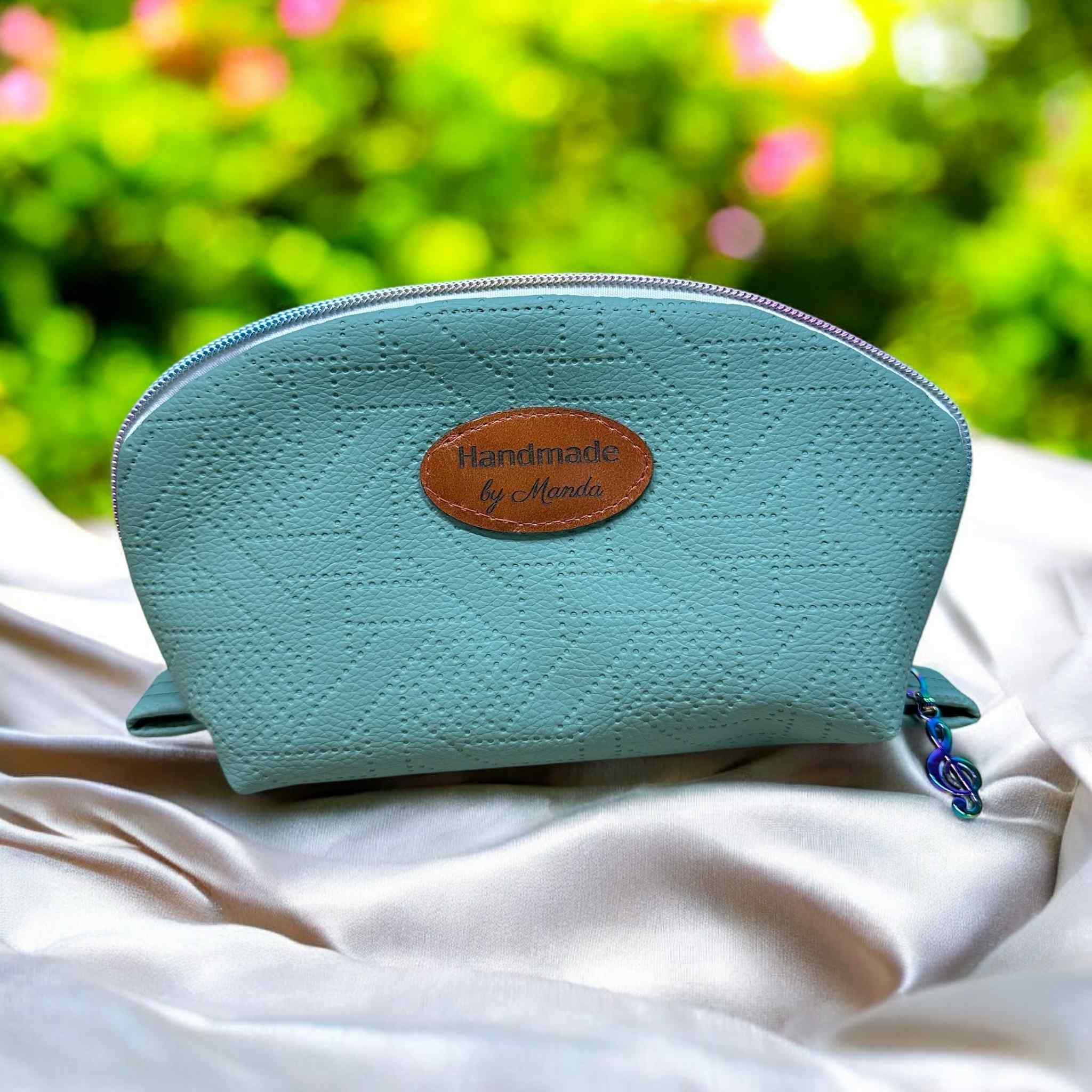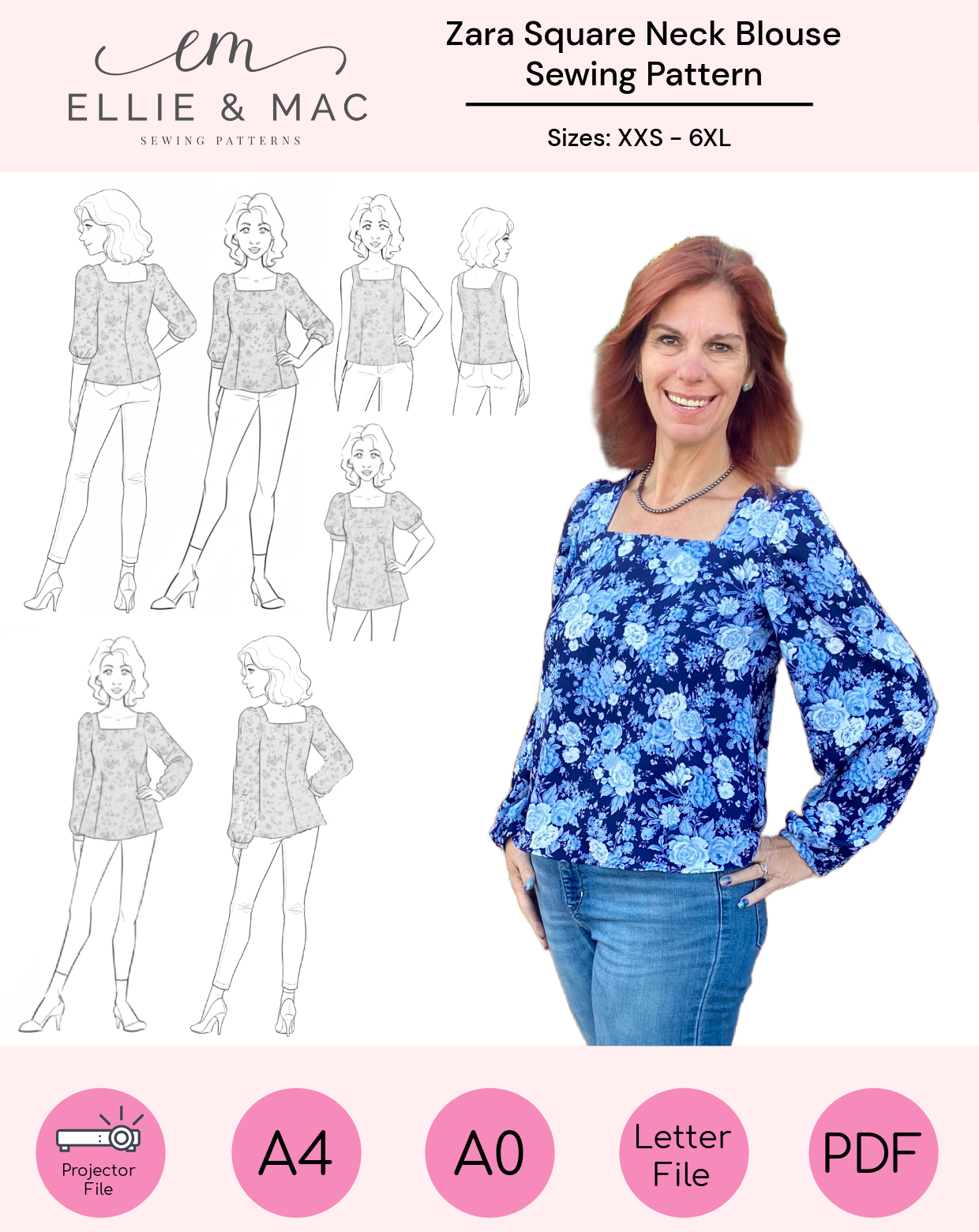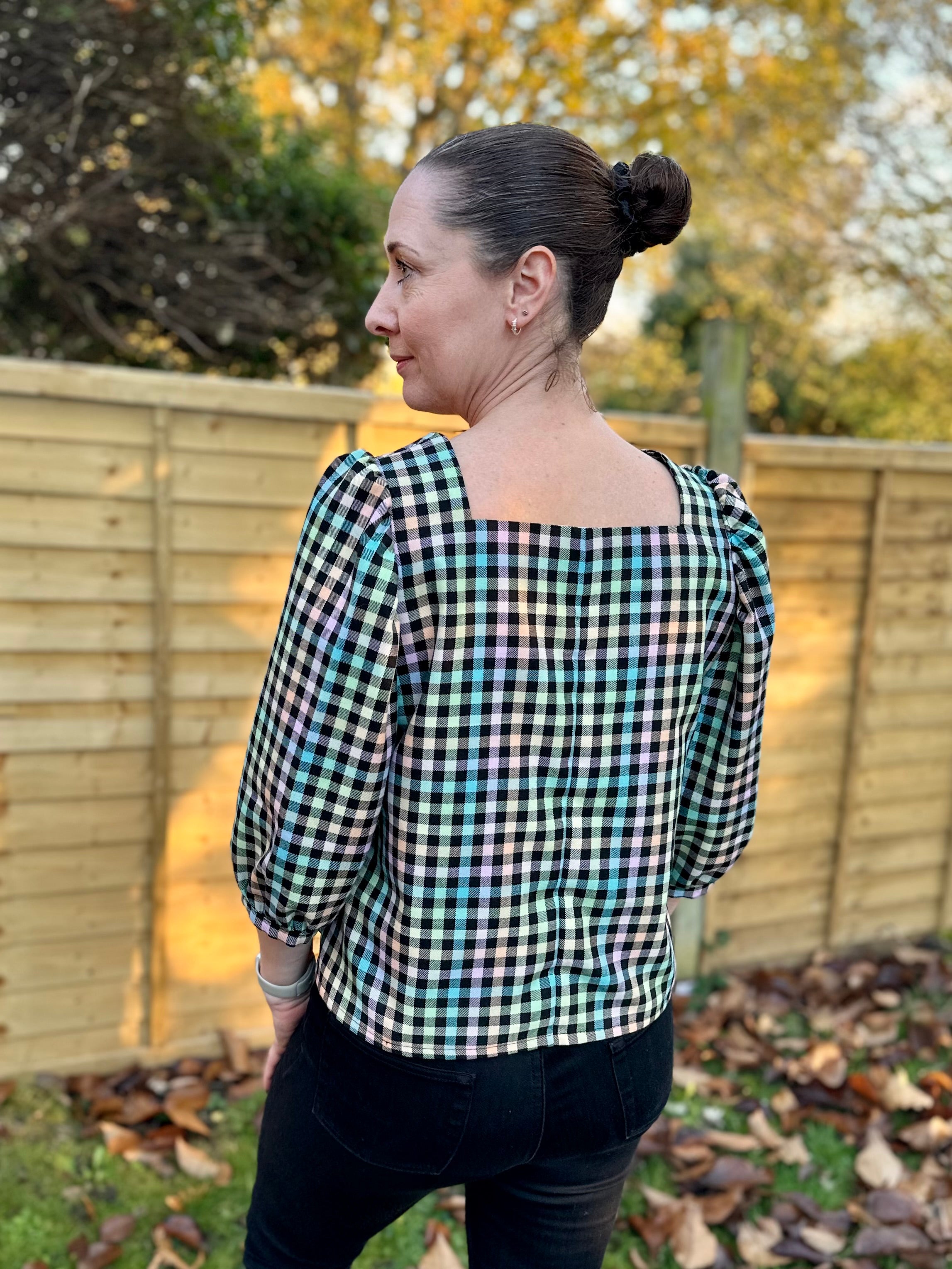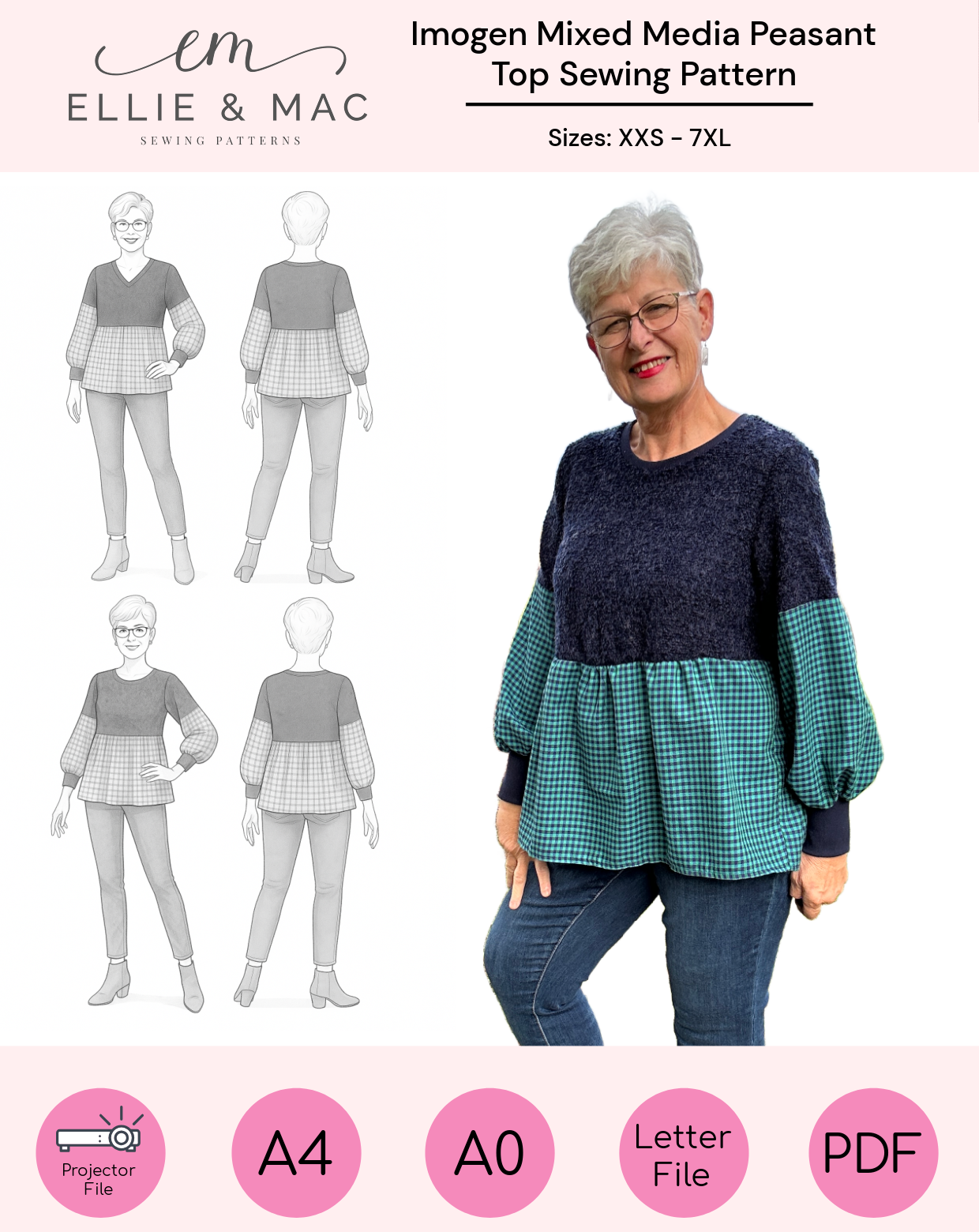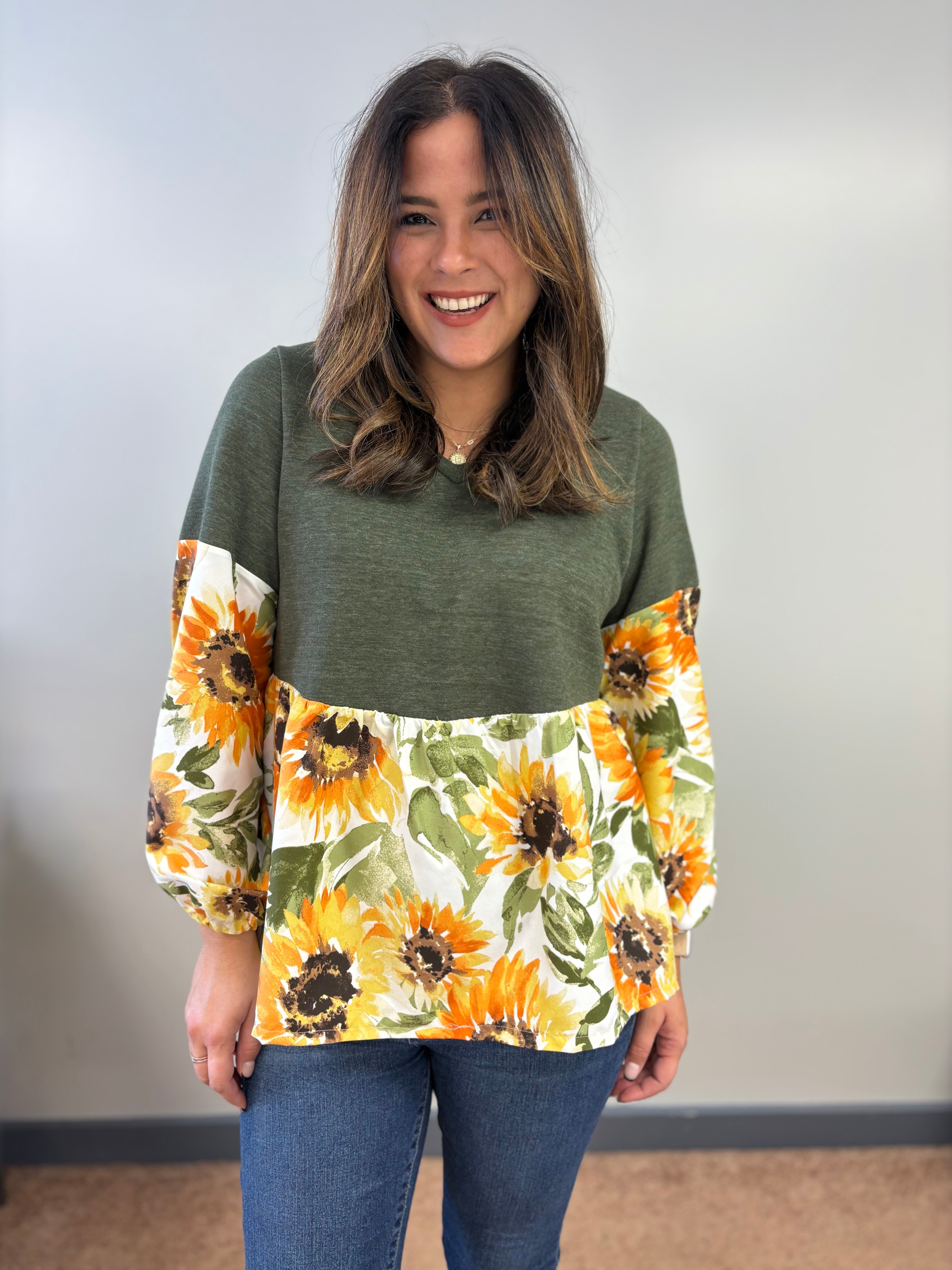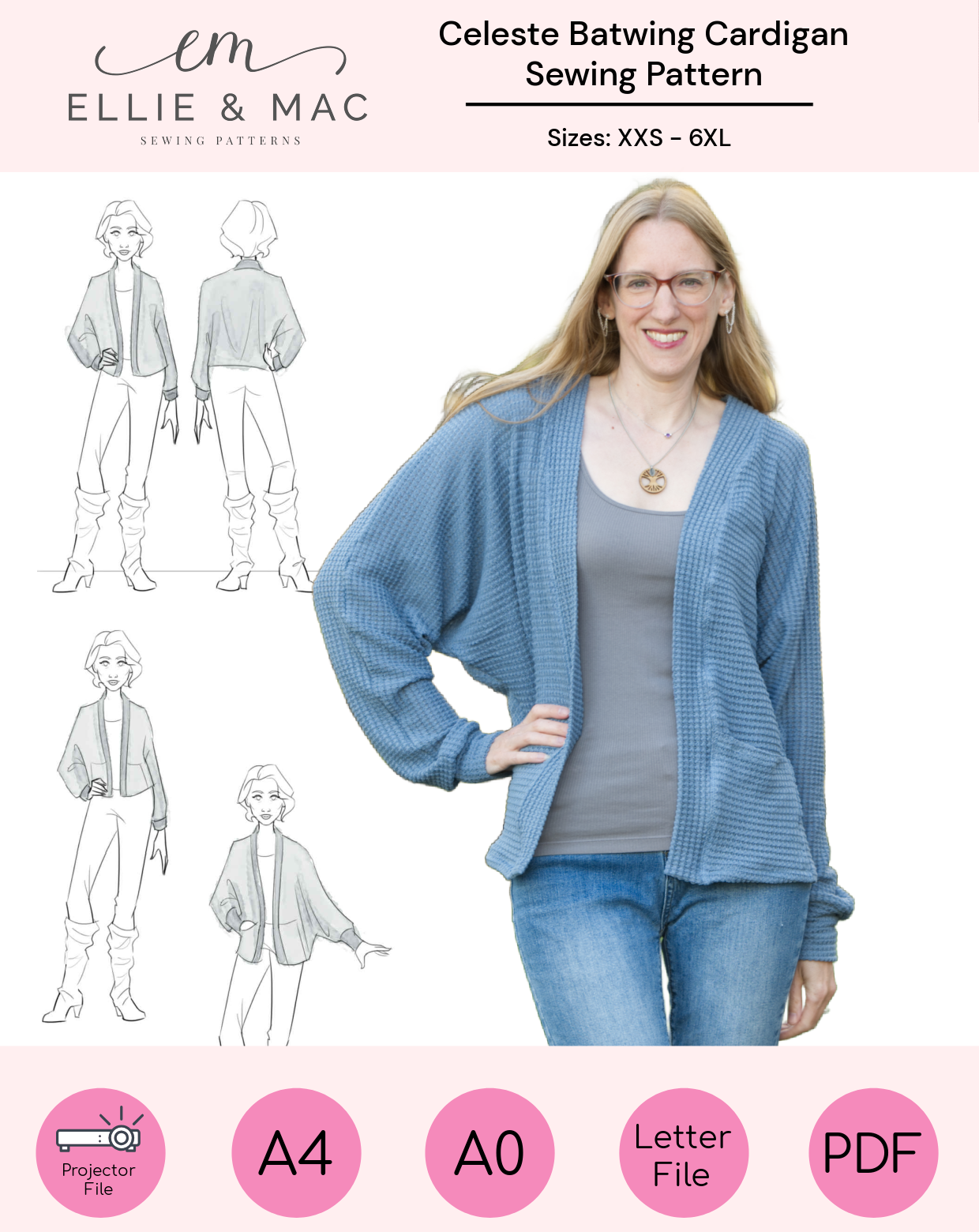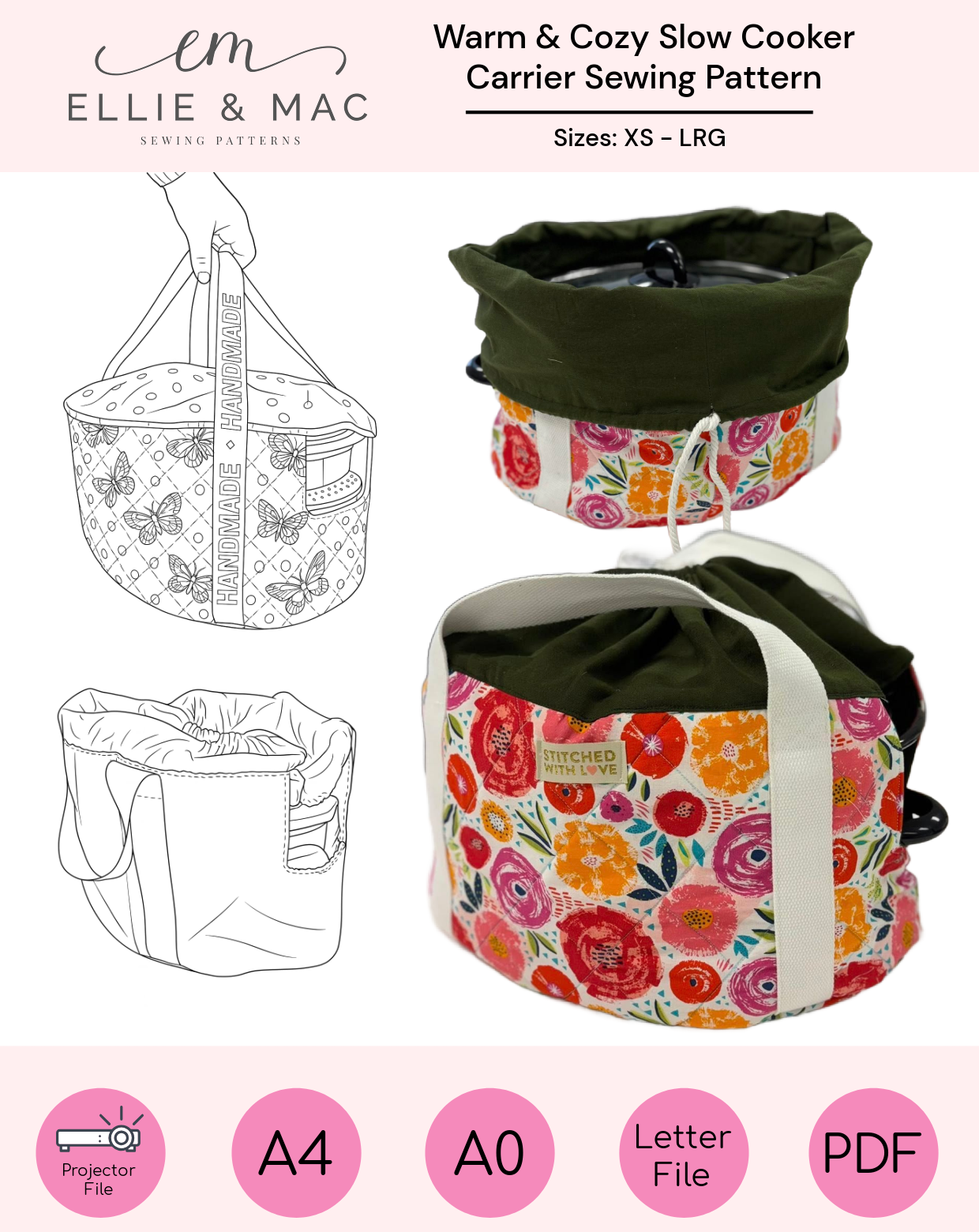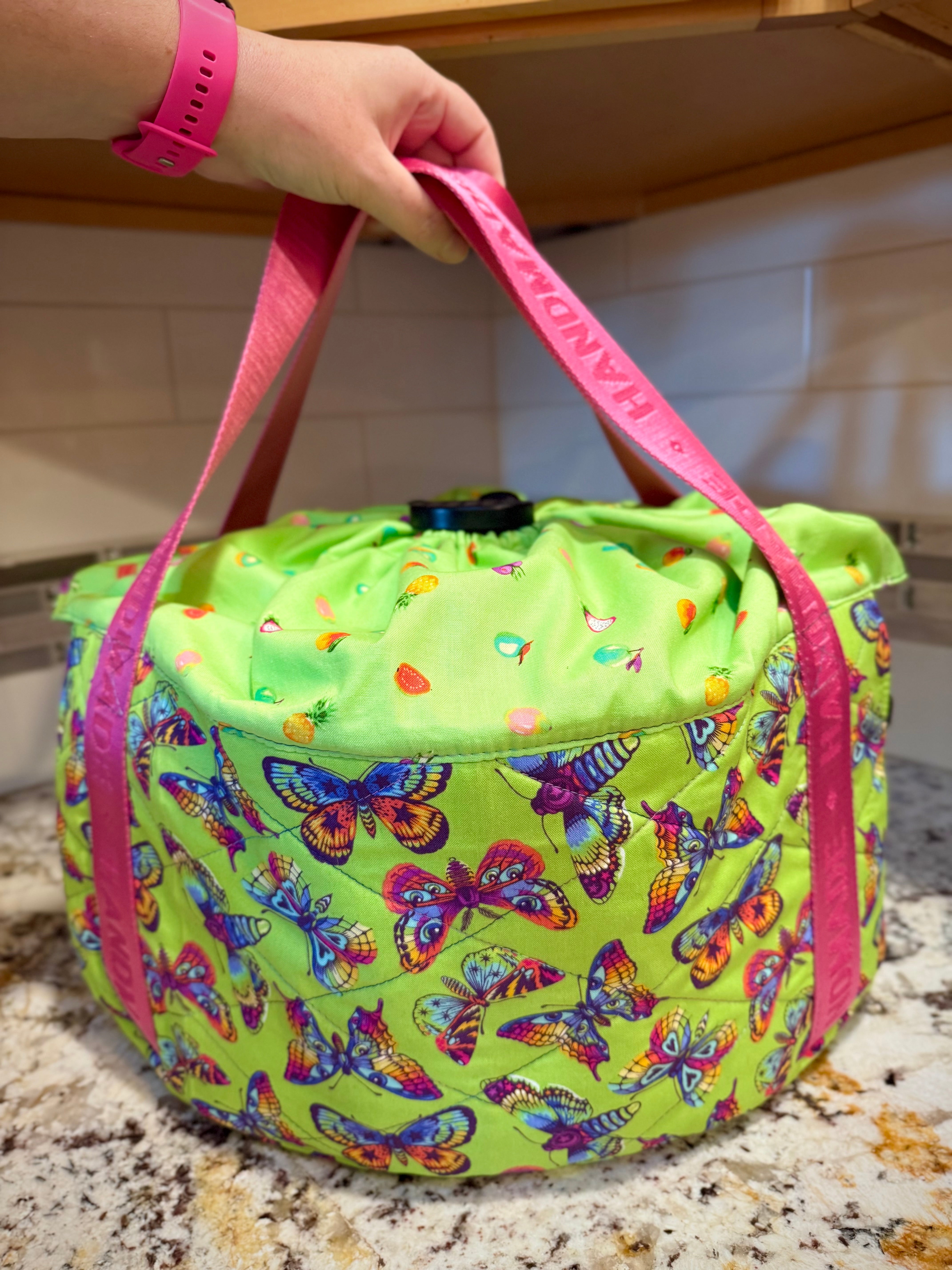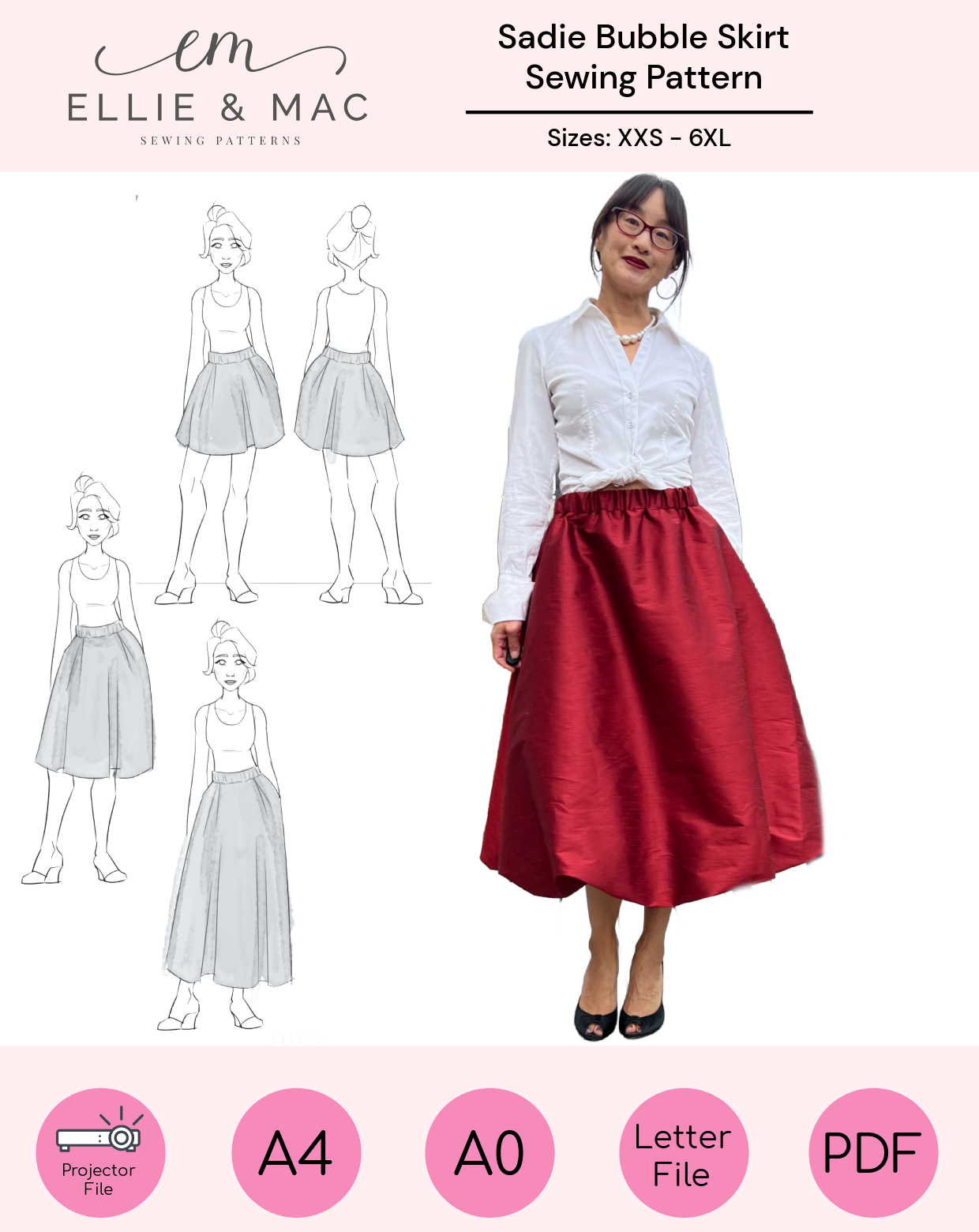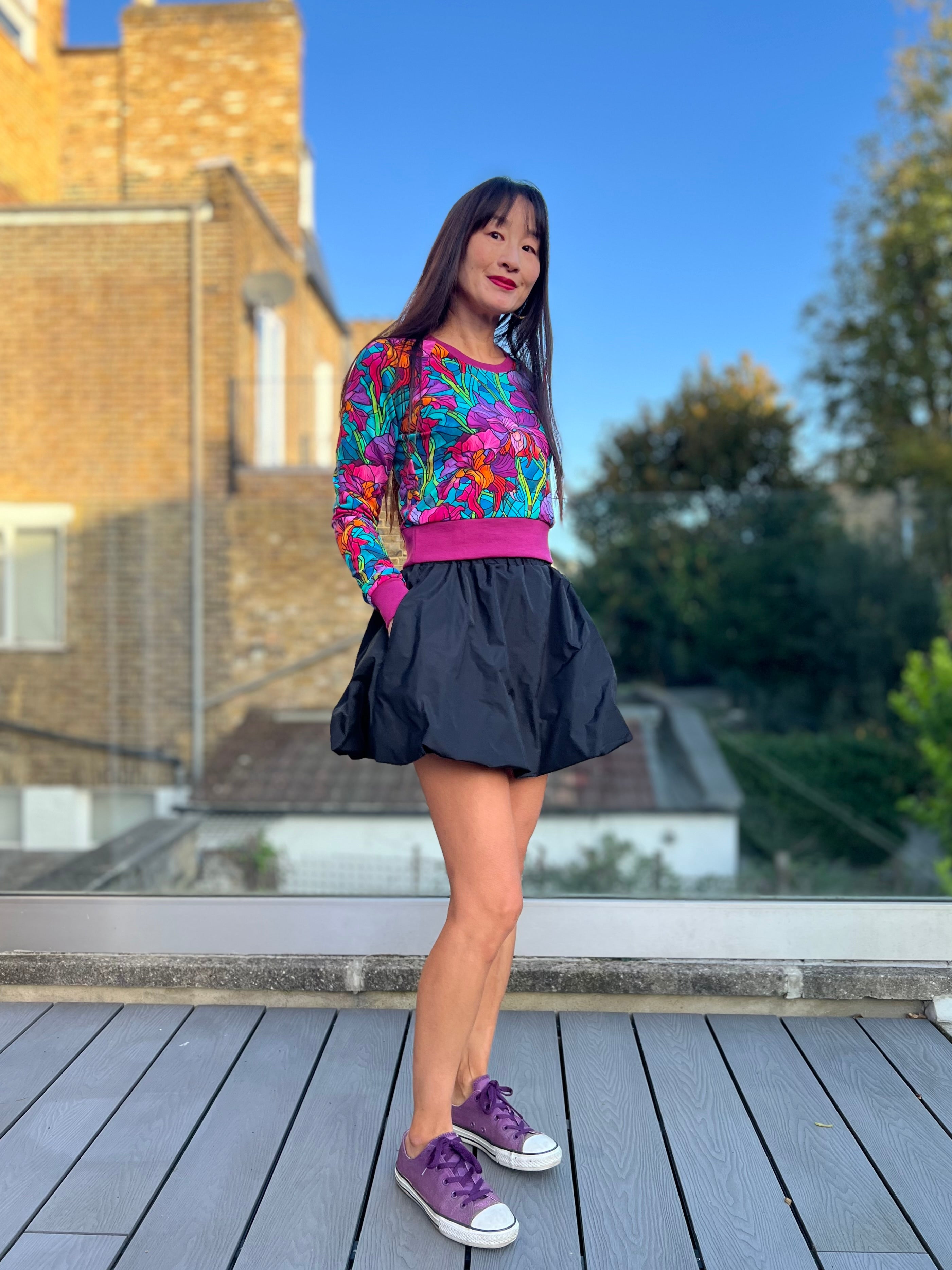



Hi friends! It’s Amy here, I hope you are all doing well. Have you been seeing bows everywhere lately and thinking about how you could incorporate them into something for yourself? (Sewing Bee, I’m looking at you…)… Well I got you, today I am going to show you how to turn the Gisella Oversized Puff-Sleeve Shirt and Dress pattern into a fun dress with as many bows as you like! As part of the process I will also how you an option on how to change the neckline, and how to split the skirt and make it button up all the way down, and how to add a collar. There will be quite a lot of steps but you can pick and choose which elements you want to use for your dress, and if you take it one step at a time, it should be quite doable I hope!
Fabrics I have used in this blog:
- Leopard print viscose from Fabric Godmother
- Pink Viscose from Shriya Fabrics
THINGS YOU WILL NEED:
• Pencil/pen
• Ruler
• Paper
• Scissors/rotary cutter
• Ellie and Mac patterns – Gisella oversize puff-sleeve shirt and dress pattern
• Pins or clips
Optional but useful:
• Pattern weights
• scotch/washi tape
• Pencil eraser/rubber
• Software like Affinity Designer/Inkscape if you want to make digital alterations instead of on paper
If you don’t yet have the pattern needed for this tutorial, you can find it here (aff link).
Please note I use a projector rather than paper patterns so all my pattern alterations take place digitally, but you can follow my instructions just the same using paper.
MAKING THE PATTERN ALTERATIONS:
So the first thing to note is that Gisella is designed to pull on over the head so it has a lot of ease to be able to do this. We are making it fully unbutton, so it does not need to be so oversize (although it still can be if you prefer). So I graded down a couple of sizes at the waist to start with, and then I took a further inch off each side of the waist because it still seemed like there was a lot of ease, as you can see here:


I also did not want a seam on my back bodice, so I overlapped my pattern pieces by the seam allowance (2 lots of the 3/8” seam allowance) to get rid of it. Alternatively you can cut the 3/8” seam allowance off the edge at the bottom of the yoke and the top of the main back bodice piece and then butt together the two pieces together that are left and stick together.

Next, I decided I wanted to add a V neck. Changing the neckline is optional so feel free to skip this if you don’t want to change it. If you do want to, you can draw a line from where the neckline meets the shoulder down to where the placket line starts. In my first draft at this, I drew the neckline to finish 4.75” down from the original neckline, but I ultimately raised it an inch as I thought it might end up lower than I wanted.

The next step requires a little visualization. There are two vertical lines along the bodice edge, ‘fold here’ and ‘placket edge’. You fold along the ‘fold here’ line, and then you fold along the ‘placket edge’ line. We have to draft the placket area to match the new neckline – if you find this really hard to follow, just leave some extra fabric in this area and cut it off later to match the neckline after you have folded the placket back.
So, since the placket folds in, the top edge will be shaped the mirror image of the neckline, and since the edge of the placket folds in again, that will be shaped like the shape of the neckline as is without mirror imaging. This is so when you fold it in, the top edges will align.
So firstly, if you are using paper, draw another copy of your front bodice piece with your new neckline on and cut along the placket line. Turn it wrong side up and lie it right next to the placket line on your original bodice piece (with the new neckline also drawn on). Draw around the edge of the neckline just over the area called ‘placket line’

It should look like this:

Turn the copy right side up again, and place it on top of the original pattern piece, aligning it along the new necklines. Keeping it level, slide it to the right until the neckline is over the ‘fold here’ section where it meets the previous line you drew on the ‘placket line’ area.
Like this:

Cut away the excess paper round the original neckline, and the final shape should be like this:

Now picture folding back the ‘fold here’ edge, and then the ‘placket line’ section, and see how the top edge aligns perfectly?
Next, we are going to make a facing for the neckline. I made mine 2” wide, measuring 2” out from the shoulder, and 2” down from the bottom neckline. Make a copy of your front bodice to draw the facing on as you will be cutting it out once it’s finished.
The facing needs to finish about 3/8” to the left of the ‘placket line’. Draw it on, following the approximate shape of the neckline, like this:

Then cut it out:

Then we are going to do the same for the back bodice. Again, measure 2” out from the shoulder and draw around roughly following the neckline shape.


Finally, I decided to draft a collar to add to the dress, because frankly, I’m a more is more kind of girl if you hadn’t guessed that already. You can absolutely skip this, but if you are interested in adding a collar, here’s how I did it.
First, make copies of one of your front and back bodice pieces and align them at the shoulder seam, and overlap by the seam allowance (2 lots of 3/8”) and stick them together along this line:


Decide how wide you want your collar to be, and draw lines at right angles at several places around the neckline, from the centre back to the front bodice placket edge.

Draw on the shape that you want your collar to be, a french curve ruler may help with this step. You can have your collar finish anywhere you like, just obviously don’t extend it past the placket line as that will be folded in. Also remember to take seam allowance into account, and you may want to set it back a bit further if you are making bows so they don’t clash directly with the collar.

This piece will be cut on the fold, if you wish you can fold a piece of paper, cut out the piece you just drew, place it on the fold on the piece of paper and trace round it, and then when you cut it out you will have the full collar piece ready to go. It should look something like this:

You will need to cut two collar pieces, one main and one lining.
Now, if you would also like an option of a collar ruffle, draw another line inside your collar piece, about half an inch away from the edge of the pattern piece all the way round, like this:

Then you can draw a rectangle for your ruffle pattern piece, which will be 1.5” by the circumference of your collar times by 1.5 (you can go for more or less depending on how many ruffles you want).
That’s the bodice finished, good job!
Next we will move on to the skirt. Make a copy of your above knee top tier skirt piece and cut it vertically into two pieces. Measure from the ‘placket line’ on the bodice out to the edge of the bodice by the ‘fold here’ line, and add a piece of paper to the edge of your skirt matching this dimension:

I then extended the length of the skirt piece to make it 27” long (I didn’t want to make a tiered skirt for this look):

Next I made a facing for the bottom edge of my skirt, 1” tall, from the side edge of my front skirt piece, finishing about 3/8” from the placket line (like the one we made for the front bodice). You will need 2, one for each front skirt piece, and another, 1” tall, the same width as the back skirt.

I drew on the pattern potential positions for my 8 bows, 2 on the bodice and 5 on the skirt. I ended up changing the position a little but I will show you that later in construction.


The back skirt I did not alter width wise, but also lengthened to 27”.
I cut my bow pieces 1.5” by 16”. I cut 8 as I wanted 8 bows down the front of my dress. I also cut ties to pull the back in a little more, two pieces the same length of the sash each, but 1.5” wide to match the bows size. For bows, you could also use 1cm wide ribbon instead of making your own ties.
Finally, I wanted my puff sleeves to be a little shorter, so I used the sleeve length adjustment line and reduce the length of the puff sleeve pattern pieces by 1”.
Ok, that’s all the pattern modifications done and we are moving on to construction!
CONSTRUCTION:
Cut out your pattern pieces, and also cut iron on interfacing for the front bodice plackets, skirt plackets, and front and back facings, and collar (if using) and attach to the relevant pattern pieces.
Fold a bow tie in half right sides together, and using the same 3/8” seam allowance as the rest of the pattern, sew around the edge of the tie, leaving a 2” gap in the middle of the tie seam for turning the tie right side out. Trim the seam allowance, turn tie to the right side using a tube turner or your preferred method, and sew closed the gap in the seam. Repeat for all ties. I used the smallest Prym tube turner.






If you want waist ties, fold each tie right side together, and sew along the long edge and one short edge of each tie. Trim seam allowance, turn right sides out and press.

Stay stitch along your neckline so it does not warp out of shape.
Press the folds into your bodice, along the ‘fold here’ line, and ‘placket edge’ line like the directions in the original pattern.



Attach the front bodice pieces to the back bodice at the shoulder seams and finish the seams in your usual method (Ie. overlocker). Attach the front facing pieces to the back facing in the same way and finish the raw edges with an overlocker (or your preferred method).

If you are making a collar:
Firstly, stay stitch the neckline edge of your collar pieces so they do not warp.
Fold your ruffle piece in half wrong sides together and press. Sew a basting stitch all along the raw edge. Mark the half and quarter points on the raw edge of the ruffle piece with pins or your preferred method.

Measure the circumference of your collar, and mark the half and quarter points with pins (or your preferred method). Pin your ruffle to your collar right sides together, with the raw edge of the ruffle aligning with the raw edge of the collar, and pinning them together at the quarter points.

Gather in the basting stitch so the ruffle fits the collar edge and pin in place.

Place the other collar piece on top right sides together and pin in place.

Sew around the curved edge of the collar, and then trim the seam allowance. You may need to also
cut snips around any particularly curved parts of your collar so it turns nicely.

Turn right side out and press well.

Place your finished collar (wrong side) on top of your bodice (right side), match the centre back and pin in place all the way around the neckline. If you are using a collar without a ruffle, follow the same steps but skip the parts that mention the ruffle.
Baste the collar to the neckline to avoid it moving around in later steps.

Fold the bodice placket back on itself and pin down so it is right sides together with the main bodice (and collar):

Place the facing right sides together on the bodice neckline, aligning the shoulder seams, and pin all the way around. Remember, the facing should finish about 3/8” short of the folded edge of the placket.

Sew all the way around the neckline, right up to the edge, also sewing over the folded edge of the placket.

Trim seam allowance and corners, turn right side out and press.

Topstitch the neckline (underneath the collar if you have one).

I also used a stitch in the ditch foot to stitch my facing to my main dress along the shoulder seams.


This is how we should be looking so far:

If you wish to add waist ties, sandwich them in the side seams above the seam allowance at the waist, and right sides together, sew the side seams closed and finish the seams (overlocker or preferred method).


Make your sleeves according to the pattern instructions, and attach to bodice.

Attach the front and back skirt pieces together along the side seams and finish the seams. Do the same for the skirt hem facing. Press the placket folds in to the edge of your front skirt pattern pieces, and then sew basting stitches along the top edge, finishing where the placket edge starts.
Hem facing:

Skirt basting:


Unfold the plackets on both the bodice and skirt pieces, and pin the bodice to the skirt, matching the side seams, and gathering the skirt to fit as needed. Sew bodice to skirt and finish seam, and press seam up, and repress the folded placket edge where the bodice and skirt meet.






Next we will attach the skirt hem facing, using the same method we used to attach the bodice facing. Fold the skirt placket back on itself and pin right sides together to the front skirt.

Pin the facing to the skirt edge, aligning the side seams. Remember the facing will stop short of the placket edge by about 3/8”. Sew all the way along the bottom edge of the skirt, including over the folded back placket. Trim the seam allowance and corners, and turn right sides out and press.



Fold the placket in to place all the way down the dress front and pin into place, and pin the skirt hem facing down along its unsecured edge.


Topstitch down the full length of the dress front, make a right angle turn, topstitch the skirt hem facing down, make a right angle turn again, and top stitch back up the full length of the other dress front. For this, I use a stitch in the ditch foot, aligned with the edge of placket, with the needle offset by 1-2mm to get an even topstitch all the way around.





Attach press studs/poppers where you marked on your pattern pieces earlier, or wherever you think looks good in the moment. This is the popper kit I have from Amazon which I would recommend: https://amzn.to/3H37sZM (aff link)
I opened my expanding buttonhole gauge to it’s widest spread and positioned my poppers about in that position.

Here you can see my buttonhole gauge and I lay my bows out next to it to get an idea of how it would look:

Tie each bow, here is a video showing how to tie it so it looks pretty:
Handstitch each bow in place over each press stud/popper position


Stand back and admire your amazing dress, you are done, and right on trend!
I hope you enjoyed this tutorial, see you next time!

Written By: Amy Day


